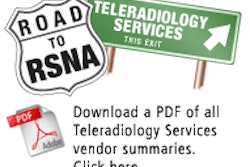SEATTLE - PACS users need to understand the true impact of PACS downtime, and develop and employ methods to control that impact, according to a presentation at the 2008 Society for Imaging Informatics in Medicine (SIIM) meeting.
The effects of downtime can vary based on the environment the PACS is deployed, according to Michael Toland, PACS admin team manager at the University of Maryland Medical System (UMMS) in Baltimore. For example, an outpatient imaging facility might be able to print film or route patients to other hospitals during PACS downtime.
A large medical center, on the other hand, requires communication with all departments, and a regional trauma center might require even more widespread notifications, Toland said. He spoke about understanding the implications of PACS downtime during a Saturday hot topic session.
Downtime can have implications on clinical care, business, and risk management, he said.
"System failures are inevitable; hardware is mechanical and will fail," Toland said. "It's important to react fast and identify the problem so you can let everybody know and feel ... confident that you can bring the system back up."
To help control the impact of downtime, it's important to communicate with users and provide regular updates, he said.
"It's much better to be able to call them than have them call you," Toland said. "Also communicate to the admin staff so they can begin to understand the business impact."
Developing escalation policies can also assist in managing downtime, with triggers in the troubleshooting methods to engage experienced resources in a timely fashion, he said.
An ounce of prevention
Downtime prevention requires examining downtime from IT, systems architecture, operational, and business perspectives, Toland said.
From an IT point of view, redundant architecture should be utilized to prevent downtime, with a design that allows hardware failures to bring down only components rather than the whole system, he said. Sites should also engage in proactive system monitoring for quickly identifying problems. If possible, test systems and interfaces should be employed, Toland said.
"You always want to make sure that you test, test, and test some more," he said.
Preventing downtime should also be tackled from an operational perspective, Toland said. This can be accomplished with policies and procedures, including change management and escalation policies. Also, documentation of these policies should be available.
"As systems become more complex and more distributed, they have a tendency to have component outages," he said. "And if you don't spot them soon enough, the system is probably going to go down. (Documentation) also benefits the PACS admins and vendors."
From a business perspective, it's important to have a good relationship with your PACS vendor, Toland said.
"When you're in a downtime situation, it's nice to be able to make a call to the vendor and have someone who's willing to go above and beyond and actually send out somebody," he said.
The service level agreement (SLA) with your vendor should cover outages, and if the systems are down, the contract should reflect penalties, Toland said.
"Minimize system outages through vendor relationships, proactive monitoring, and nice service level agreements," he said.
By Erik L. Ridley
AuntMinnie.com staff writer
May 19, 2008
Related Reading
Planning eases PACS upgrade woes, vendor changes, March 27, 2008
Effective communication is crucial for radiology department success, March 20, 2008
Using informatics to meet communication challenges, February 7, 2008
High-tech communication tools improve patient care, studies find, December 6, 2007
Developing a cost-effective image QA workflow with PACS, November 21, 2007
Copyright © 2008 AuntMinnie.com




















